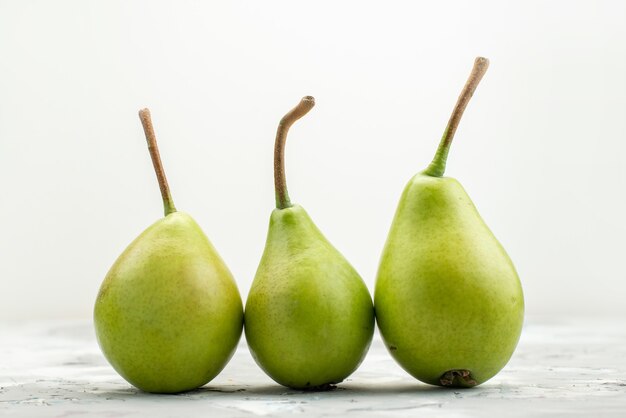Intermittent fasting (IF) is a popular health trend gaining attention for its potential to improve overall well-being. But is intermittent fasting healthy? This eating pattern involves alternating periods of eating and fasting, focusing more on when to eat rather than what to eat. Unlike conventional diets, it simplifies meal planning and emphasizes timing.
Historically, fasting has been practiced for religious and cultural reasons. Today, it is widely adopted for its potential health benefits, including weight management, better metabolic health, and even improved brain function. With countless claims about intermittent fasting benefits, it’s no surprise that people are curious. But is it truly beneficial for everyone?
Types of Intermittent Fasting
Intermittent fasting comes in several variations, allowing individuals to choose what best suits their lifestyle. Each method offers unique benefits and challenges.
The 16/8 Method
This is the most common type of intermittent fasting. It involves fasting for 16 hours and eating within an 8-hour window. For example, you might eat between noon and 8 PM and fast for the rest of the day.
- Benefits: This method is simple, easy to follow, and promotes consistent calorie reduction without the need for strict meal planning. Many claim 16/8 fasting benefits include better focus and improved digestion.
The 5:2 Diet
In this approach, you eat normally for five days and restrict calorie intake to about 500–600 calories on two non-consecutive days.
- Benefits: It’s flexible and doesn’t require constant calorie counting, making it sustainable for long-term use.
Alternate-Day Fasting
This involves fasting every other day, either by consuming no calories or significantly reducing intake on fasting days.
- Benefits: It’s highly effective for weight loss and metabolic improvements but can be challenging to maintain.
Other Popular IF Variations
- Eat-Stop-Eat: A 24-hour fast once or twice a week.
- Warrior Diet: Fasting for 20 hours and eating a large meal in a 4-hour window.
These variations cater to different lifestyles and goals, ensuring everyone finds a suitable option.
Related to Read: Is Intermittent Fasting Safe for Diabetics? 6 Proven Ways Backed by Science
Health Benefits of Intermittent Fasting
Intermittent fasting has been linked to numerous health advantages. Here’s a closer look at the key benefits.

Metabolic Health
Intermittent fasting helps improve insulin sensitivity, allowing the body to use glucose more efficiently. Studies show that it can significantly lower blood sugar levels, reducing the risk of type 2 diabetes. By regulating hormones, it also enhances fat-burning processes, making it easier to manage weight and energy levels.
Weight Management
Many people adopt intermittent fasting to lose weight. By limiting eating windows, calorie intake is naturally reduced. Additionally, fasting impacts appetite hormones like ghrelin and leptin, helping control hunger and promoting satiety. For those wondering if IF can help shed pounds, the evidence strongly supports its role in weight loss.
Heart Health
Fasting is beneficial for cardiovascular health. It lowers LDL cholesterol, reduces triglycerides, and can stabilize blood pressure. These effects help reduce the risk of heart disease, answering the question, is fasting good for the heart?
Cellular Health
During fasting, the body initiates autophagy, a process where damaged cells are repaired or recycled. This can slow aging and protect against chronic diseases, such as cancer and Alzheimer’s.
Mental Clarity and Brain Health
Intermittent fasting enhances brain function by reducing inflammation and promoting the production of brain-derived neurotrophic factor (BDNF). This protein supports memory and learning, making intermittent fasting for brain health a promising area of research.
Is Intermittent Fasting Healthy for Everyone?
While intermittent fasting has many benefits, it’s not suitable for everyone. Specific groups need to approach it with caution or avoid it altogether.
Who Should Avoid Intermittent Fasting?
- Pregnant or Breastfeeding Women: Nutritional needs are higher during these periods, making fasting risky.
- Individuals with Eating Disorders: IF can worsen disordered eating patterns.
- Diabetics or Those with Blood Sugar Issues: Fasting can cause dangerous fluctuations in blood sugar levels, especially for those on medication.
- Athletes: High energy demands may not align with the restrictions of fasting.
Risks and Side Effects
Common side effects include fatigue, irritability, and difficulty concentrating, especially during the initial stages. Prolonged fasting can also lead to nutrient deficiencies if not planned carefully. Understanding the side effects of intermittent fasting ensures that individuals make informed decisions.
Scientific Evidence Supporting Intermittent Fasting
Intermittent fasting (IF) has gained massive popularity for its potential health benefits. It’s more than just a weight-loss trend; numerous scientific studies highlight its positive impact on metabolism, cellular repair, and chronic disease management. In this article, we’ll explore the science behind intermittent fasting, its diet patterns, myths, and how you can implement it safely for specific goals.
Key Studies Highlighting the Benefits
Scientific research supports the idea that intermittent fasting can benefit overall health. A few key studies are worth mentioning:
- Metabolic Improvements: A study published in Cell Metabolism (2015) showed that intermittent fasting enhanced insulin sensitivity and reduced inflammation.
- Cellular Repair: Research in Autophagy (2016) demonstrated that fasting triggers autophagy, a cellular process that helps remove damaged cells and improve overall health.
- Chronic Disease Management: A review in The New England Journal of Medicine (2019) highlighted fasting’s role in reducing risks associated with heart disease, diabetes, and neurodegenerative diseases.
Despite these promising results, more long-term human studies are needed to confirm these benefits conclusively.
Limitations of Current Research
While the science of intermittent fasting is promising, there are limitations to the research:
- Short Study Duration: Most studies last only a few weeks or months, which limits understanding of long-term effects.
- Small Sample Sizes: Many trials involve small groups, making results less generalizable.
- Lack of Diversity: Research often excludes certain demographics, like older adults or individuals with pre-existing conditions.
- Individual Variability: Results can vary significantly depending on genetics, lifestyle, and adherence to fasting protocols.
To fully understand intermittent fasting’s potential, more robust, long-term research is essential.
Intermittent Fasting and Diet Patterns
Intermittent fasting is not just about skipping meals; it’s about following a structured eating pattern that suits your lifestyle and health goals.
How to Start Intermittent Fasting Safely
Jumping straight into fasting can be challenging. Start gradually by reducing your eating window over a week. This helps your body adapt to the new schedule without stress.
Choosing the Right Fasting Schedule
Popular schedules include:
- 16:8 Method: Fast for 16 hours and eat within an 8-hour window.
- 5:2 Diet: Eat normally for five days, and consume 500–600 calories on two non-consecutive days.
- Alternate-Day Fasting: Fast every other day, consuming minimal calories on fasting days.
Choose a plan that aligns with your daily routine and physical activity levels.
What to Eat During Eating Windows
Eating nutrient-dense foods is crucial during eating windows to maximize benefits and avoid nutrient deficiencies.

Nutrient-Dense Foods to Prioritize
- Lean Proteins: Chicken, fish, eggs, and legumes.
- Healthy Fats: Avocados, nuts, seeds, and olive oil.
- Whole Grains: Brown rice, quinoa, and oats.
- Vegetables and Fruits: Broccoli, spinach, berries, and oranges for vitamins and antioxidants.
Hydration Tips
Drink plenty of water throughout the day. Herbal teas and black coffee (without sugar or cream) are also excellent hydration options during fasting hours.
Combining Intermittent Fasting with Keto or Low-Carb Diets
Combining intermittent fasting with a ketogenic or low-carb diet can amplify results by promoting ketosis—a metabolic state where the body burns fat for fuel.
- Keto Diet Benefits: Accelerates fat loss and reduces hunger cravings.
- Low-Carb Synergy: Stabilizes blood sugar levels and complements the fasting process.
If you’re new to both diets, consult a healthcare professional to ensure it’s a safe combination for you.
Intermittent Fasting for Specific Goals
Intermittent fasting can be tailored to achieve specific health and fitness objectives.
Intermittent Fasting for Weight Loss
Fasting reduces calorie intake and boosts metabolism, leading to effective weight loss. Studies reveal that intermittent fasting can lead to a 3–8% reduction in body weight over 3–24 weeks.
Can IF Help Build Muscle?
With proper nutrition and strength training, intermittent fasting can support muscle growth. Consuming high-quality protein during eating windows is essential for muscle repair and growth.
Managing Chronic Conditions with Intermittent Fasting
Intermittent fasting may help manage:
- Type 2 Diabetes: By improving insulin sensitivity.
- Heart Health: By lowering cholesterol and blood pressure.
- Brain Health: By promoting autophagy, reducing the risk of Alzheimer’s.
Always consult your doctor before using intermittent fasting to manage chronic health conditions.
Related to Read: Does Eating Breakfast Boost Metabolism? Here’s What Science Says
Common Myths About Intermittent Fasting
Despite its popularity, several myths surround intermittent fasting.
Does Intermittent Fasting Slow Down Your Metabolism?
Contrary to popular belief, intermittent fasting may boost metabolism by increasing norepinephrine levels and promoting fat burning.
Does Skipping Breakfast Harm Your Health?
Skipping breakfast is not inherently harmful if you meet your nutritional needs during eating windows. The benefits outweigh the risks for most healthy individuals.
FAQs About Intermittent Fasting
Is Intermittent Fasting Safe for Long-Term Use?
Yes, if done correctly. Balance fasting with nutrient-dense meals and hydration to maintain long-term health.
How Many Hours Should You Fast to Lose Weight?
Fasting for 16 hours (16:8 method) is effective for weight loss when combined with a healthy diet and exercise.
Can You Drink Coffee During Intermittent Fasting?
Yes, plain black coffee is calorie-free and won’t break your fast.
Does Intermittent Fasting Work Without Exercise?
While exercise enhances results, intermittent fasting can still be effective for weight loss and metabolic health without it.
Conclusion
Intermittent fasting is more than just a trendy diet—it’s a scientifically supported approach to improving overall health, managing weight, and even addressing chronic conditions. By leveraging the body’s natural processes, intermittent fasting promotes metabolic health, cellular repair, and longevity. However, it’s essential to choose a fasting method that suits your lifestyle and start gradually to allow your body to adapt.
Whether your goal is weight loss, muscle building, or better health management, intermittent fasting can be an effective tool. Pair it with nutrient-dense meals and stay hydrated to maximize its benefits. Always consult a healthcare professional if you have pre-existing conditions or concerns about fasting.
Ultimately, intermittent fasting isn’t a one-size-fits-all solution, but when done right, it can help you achieve a healthier and more balanced lifestyle.
























